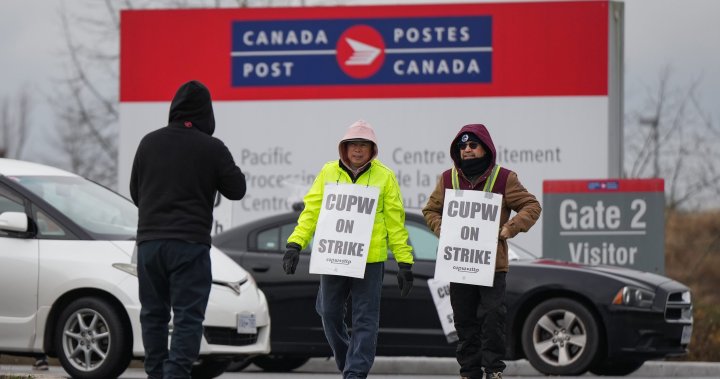Canada Post is seeking to revive negotiations with the Canadian Union of Postal Workers, which represents approximately 55,000 striking workers. The Crown corporation recently announced the introduction of a “comprehensive” framework aimed at addressing key issues that contributed to the strike, primarily concerning wages and working conditions. The union’s members initiated the strike on November 15, following escalating tensions between the two parties, particularly around the need for better remuneration and improved working conditions. Canada Post’s statement indicated a strong desire to facilitate discussions and resolution by proposing adjustments that would allow for greater flexibility within its delivery model, as well as showing willingness to compromise on other significant matters during the negotiations.
Despite the corporation’s efforts to showcase a new framework for negotiation, the situation remains tense. Labour Minister Steven MacKinnon highlighted that the special mediator appointed by the federal government suspended work after determining that the two sides were too far apart in their positions to reach an agreement. During a recent meeting with representatives from both Canada Post and the union, MacKinnon urged them to come back to the negotiating table with an enhanced sense of urgency, emphasizing the importance of finding a viable solution to end the strike and resume normal operations. The ongoing labor dispute has left many Canadians experiencing delays in mail delivery, which has prompted calls for action and resolution.
The financial backdrop to this labor dispute is discouraging. In its latest financial report, Canada Post revealed a loss of $315 million before tax in the third quarter, a significant increase from the $290 million loss reported during the same period the previous year. These results paint a grim picture for the Crown corporation, suggesting it is on track for another considerable financial loss in 2024, which would signify a disturbing trend of seven consecutive years of operating in the red. This financial strain adds another layer of complexity to the negotiations and raises questions about the sustainability of Canada Post’s operations if the dispute remains unresolved for an extended period.
As tensions escalate, Canada Post has taken the controversial step of laying off some striking workers, labeling it a temporary measure. This move has sparked allegations from the union, which claims it is a tactic of intimidation. In response, the Canadian Union of Postal Workers has lodged an unfair labor practice complaint with the Canada Industrial Relations Board, reflecting the growing animosity between the two parties. The union’s leadership has emphasized that the layoffs are undermining the workers’ rights and bargaining power, further complicating the negotiation dynamics. The striking workers desire not only fair pay but also security in their employment as they navigate this protracted labor dispute.
While the strike continues, Canada Post insists it remains committed to negotiating new collective agreements that will satisfy both employee and customer demands for certainty in service. However, the ongoing disruptions caused by the work stoppage have raised concerns among the public and businesses that rely on postal services. Without reaching a resolution, the delay in mail delivery could foster further dissatisfaction and impact the public’s perception of Canada Post. There is a palpable urgency to resolve the labor conflict to ensure that services resume and that the company can stabilize its financial health amid ongoing losses.
In conclusion, Canada Post’s attempts to reengage the Canadian Union of Postal Workers through a newly proposed framework highlight the tensions inherent in labor negotiations, especially against a backdrop of financial losses. While the hope is to bridge the gap between the two parties through mediated discussions, the recent escalations, including layoffs and allegations of intimidation, illustrate the intricate challenges faced in achieving a negotiated settlement. The situation remains fluid, with both sides under pressure to resolve their differences quickly to restore essential postal services and ensure equitable working conditions for employees. As the negotiating process continues, all eyes will be on the outcomes of these discussions and the implications they carry for the future of Canada Post and its workforce.










